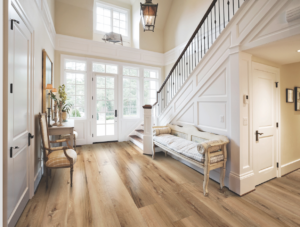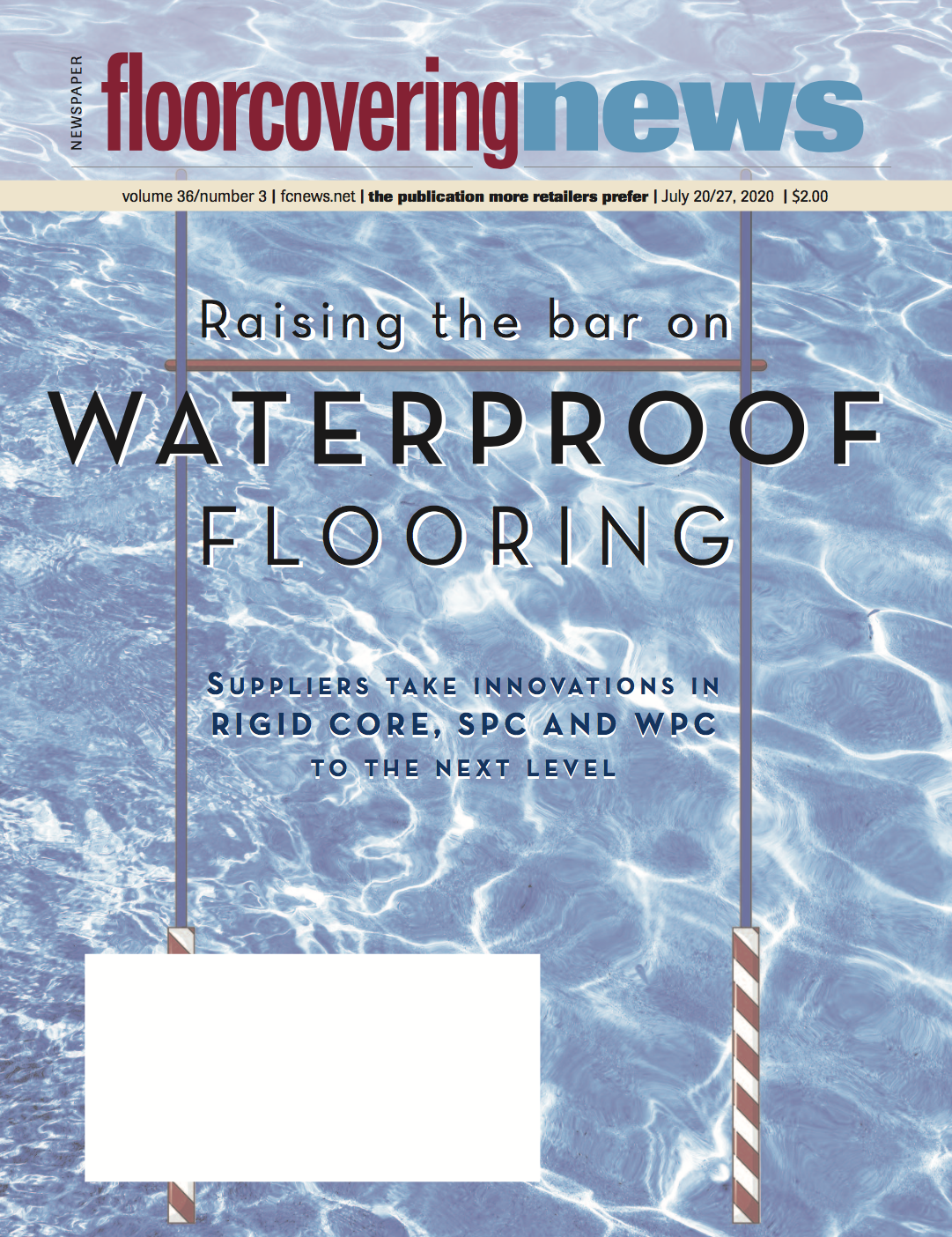By K.J. Quinn
As the resilient category continues to expand into various subsegments—LVT, WPC and SPC—flooring dealers have had to stay abreast of where each product, once installed, will truly thrive.
Following are a few general guidelines to help customers make the right decision.
Consider the surroundings

When helping a consumer find her ideal floor, experts say retail sales associates need to consider several factors, including the consumer’s lifestyle and the room in which the flooring is being installed. For instance, areas with direct sunlight could benefit from an SPC product.
That’s according to George McMurtry, owner, America’s Carpet Outlet, State College, Pa., who explained flooring near “a porch or deck entrance with a southern exposure, a wall with full-length windows or in a home without UV protection in the windows is typically in direct sunlight. A WPC product could be more susceptible to movement caused by the direct sunlight than a product with an SPC core.”
SPC can also be the ideal product for a consumer looking for a high-performing floor. “SPC is a home run for those wanting tough, dent-resistant hard surface, especially if they don’t want to remove their existing ceramic or porcelain tile,” said Marjorie Benson, president, Friendly Floors, Port Charlotte, Fla.
Listen for Main Street opportunities
While WPC and SPC flooring have become the go-to products for residential projects, they also made their way into the commercial space. “I recommend LVT products in any situation that a customer may be looking at hard surfaces,” said Chris Kemp, owner, Kemp’s Dalton West Flooring, with three locations in Georgia.
Craig Phillips, president, Barrington Carpet, Akron, Ohio, has seen his custom builder, commercial and retail business all shift over to SPC products. “SPC offers many advantages over traditional LVT—no acclimation, better sound absorption, in addition to being more forgiving of imperfect subfloors. We have actually seen some of our property accounts switch to SPC where their budget permits.”

Despite WPC and SPCs’ strong hold on most of the market, traditional LVT is still being specified in various commercial projects. As Benson explained, “Glue-down LVT is better for commercial applications where chairs, carts, etc., may be rolling over them. In Florida, we have more concrete slabs in poor condition than not, so we prefer floating floors residentially.”
Phillips said he sees LVT being installed mainly in property management projects. “It’s aggressively priced but allows the property managers any opportunity to upgrade their common area flooring.”
Specify according to need
While it is clear most dealers have their top product categories for different installation projects, many stress the fact that they don’t necessarily push the consumer to one specific product.
“Typically, for most homeowners we would not make any significant distinction among the different construction types of LVT,” McMurtry said. “In more residential environments, our experience is the final selection should be based on color, traffic type and volume and general appearance.”
McMurtry is not alone. Tim Schoolfield, owner, Countryside Carpets Flooring America, O’Fallon, Mo., said his staff keeps it simple. “This gets way too complicated. I tell them to pick the look and feel they like; take the samples home and see how they look. If they like it and it fits their budget—buy it. In most residential applications, it doesn’t matter what acronym it is. Most household moisture cleaned up properly isn’t going to hurt it.”

